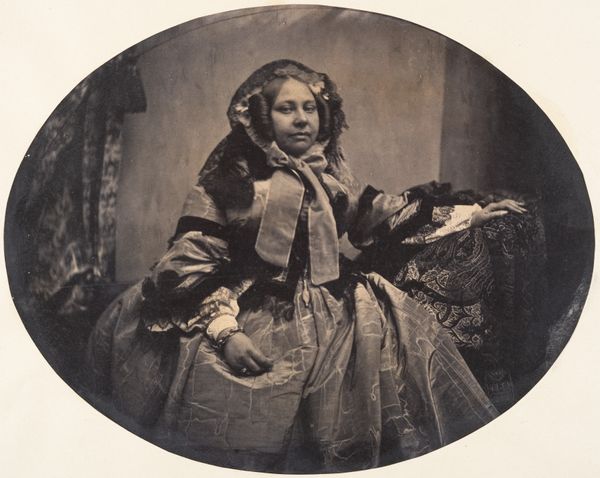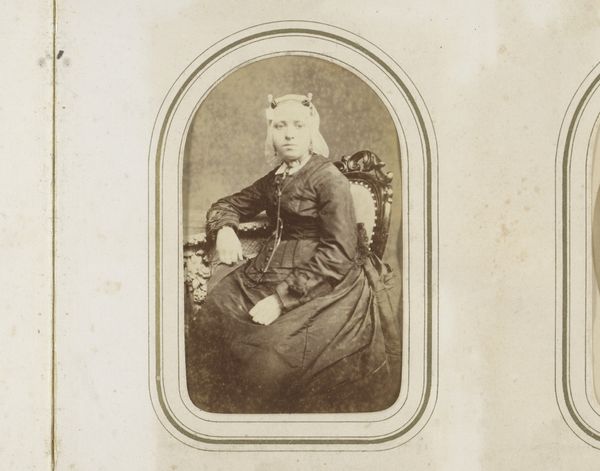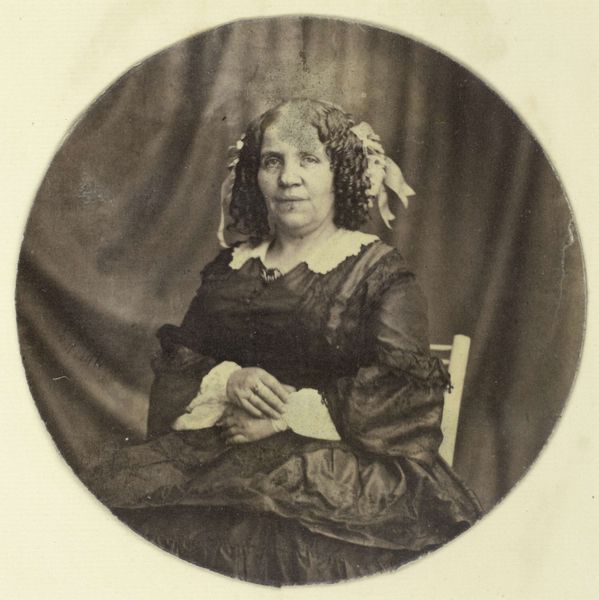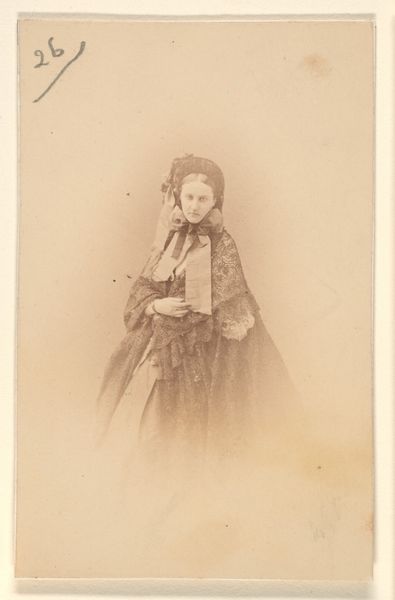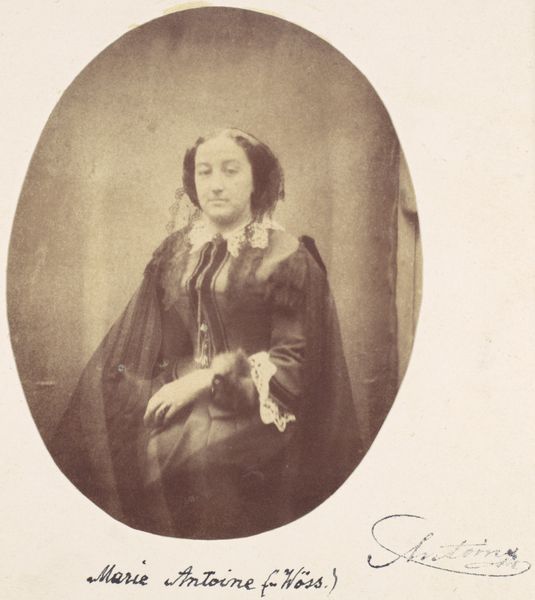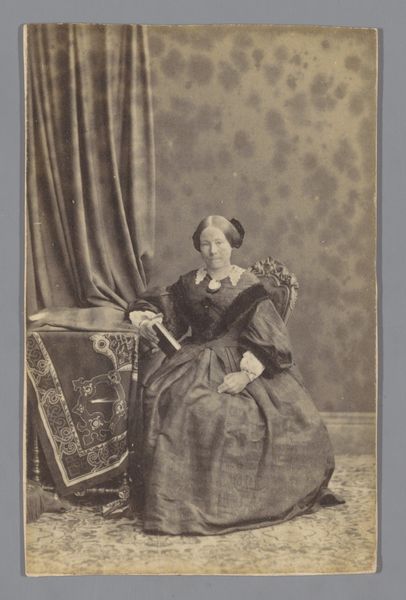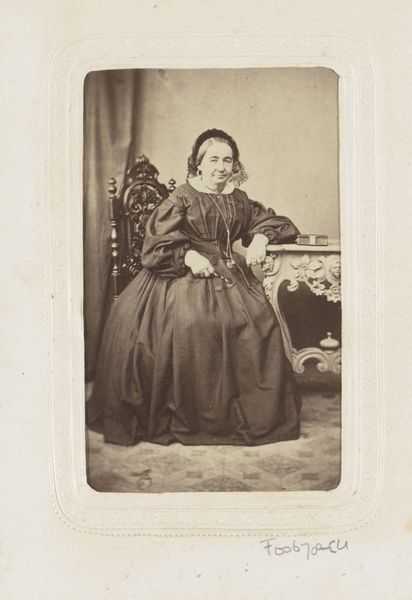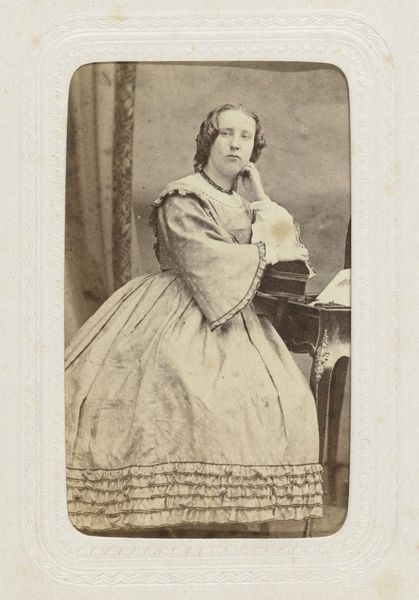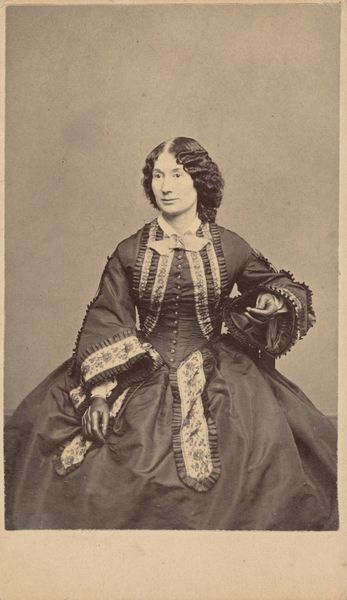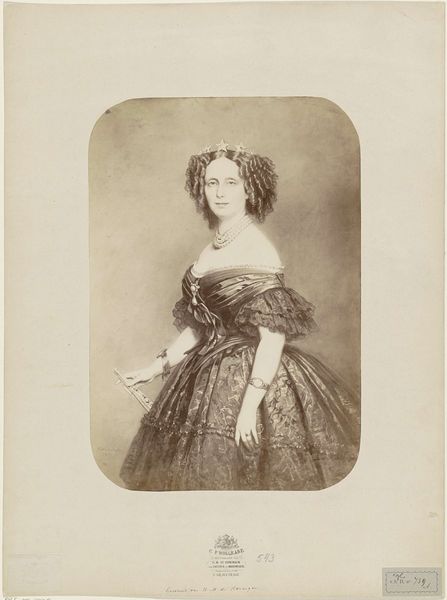
Dimensions: Image: 7 5/16 in. × 6 in. (18.6 × 15.2 cm) Sheet: 13 3/8 × 18 1/8 in. (34 × 46 cm)
Copyright: Public Domain
Curator: What strikes you most about this portrait, "Madame Gihoul," created by Louis-Pierre-Théophile Dubois de Nehaut between 1854 and 1856, using the albumen print technique? Editor: A stillness, a profound sense of quietude, even melancholy. It’s not just her pose; it's in the soft gradations of the albumen print itself, creating this dreamlike, almost ethereal atmosphere. It's hard to tell what she is thinking, feeling, wishing for… Curator: Well, in examining photography during the mid-19th century, particularly portraiture, it's important to acknowledge its role in constructing and reinforcing societal hierarchies. Consider Madame Gihoul's clothing, accessories, and pose – they all signal her status and respectability within that era. Her image is less about individual emotion and more about publicly performed identity. Editor: Precisely! Think of the restrictions placed upon women at that time! There were constricting gender roles that permeated even photographic studios. This photo becomes a silent testament to the expectations women had to bear, making the small gestures, like how her hands are clasped, speak volumes about repressed expression. Is there any visual evidence about the politics surrounding Dubois de Nehaut that helps us connect this to other political or ideological statements they were making? Curator: Dubois de Nehaut moved within specific social circles, and photography itself was emerging as both a tool for documentation and for social positioning. How and where images like these were displayed – in albums, as calling cards, in public exhibitions – all contributed to the negotiation of social power. We must investigate how these displays legitimized, challenged, or inadvertently critiqued these same values, since we can examine its implications through distribution practices, exhibitions and viewing customs. It becomes this fascinating site to explore social dynamics and power relations! Editor: Seeing how photography intersected with broader cultural narratives about gender, class, and identity truly enriches our reading of images like "Madame Gihoul." It really urges us to keep questioning and contextualizing the narratives we've inherited, prompting necessary critical conversations. Curator: Absolutely! And understanding that helps reveal photography’s contribution to 19th century social dialogues and gives us the opportunity to interpret and examine its role as a cultural force in the decades since then.
Comments
No comments
Be the first to comment and join the conversation on the ultimate creative platform.
